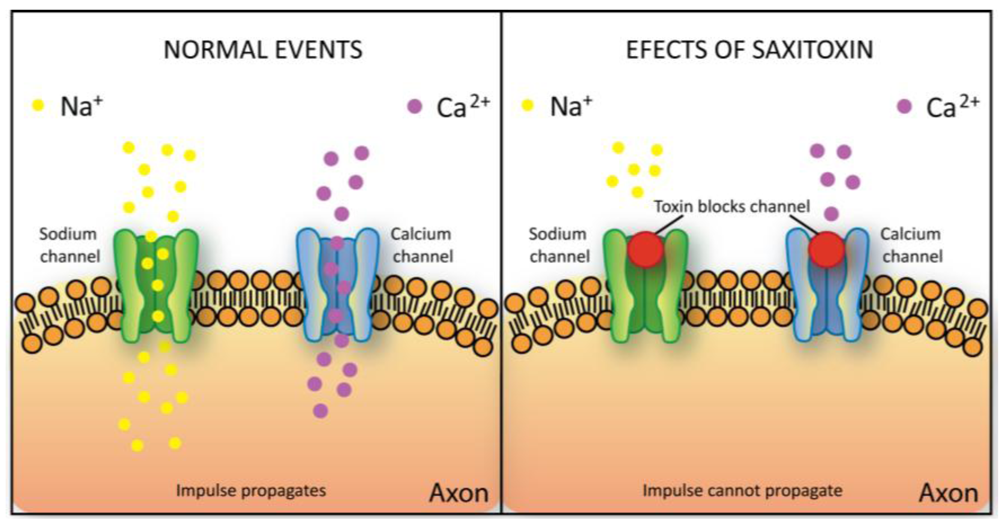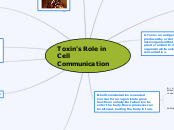Toxin's Role in Cell Communication
Harm: some organisms secrete poisons in order to disable and potentially kill other organisms
Protect: some organisms secrete poisons in order
to scare away predators
A. Toxin: an antigenic substance produced by or derived from a microorganism that is secreted by a plant or animal to disable another organism while existent at a low concentration.
Purpose of Toxins:
As a form of defense against predators
Examples of Toxins:
Hemotoxin - toxin found in some snakes and can
affect red blood cells and damage tissues.

Neurotoxin - toxins that inhibit synaptic transmissions
in the axon terminals.
Necrotoxin - toxins that destroys the target cells.

Cytotoxins - toxins that directly affect cells
B. Cell communication is needed
in order for an organism to grow
function normally. But when toxins
enter the body, these processes can be altered, hurting the body in turn.
B. i. Ligand is a type of molecule that
attaches it self to another molecule normally larger. It is used commonly in describing cell communication.
B. ii. G-Protein Receptors are commonly targeted
by toxins due to the simplicity of it.
B. iii. Signal transduction is the transmission of cells from the exterior to the interior of the cell. These signals need to be transmitted into the cell to make sure that the correct response is activated.
B. iv. Once the cell receives the signal, it performs the function that the signal required it to do. This can either be the regulation of cytoplasmic activities like protein synthesis or it can be the regulation of transcription, which is the production of mRNA from DNA.
Subtopic

E.
G. Poison arrow frogs, also known as poison dart frogs, are well known for their use of toxins to disable larger predators
Poision dart frogs secrete a toxin known as epibatidine, which binds with a neurotransmitters called nicotinic acetylcholine receptor. When the two binds, it releases ions through the post-synaptic membranes of the cells, thus depolarizing them. This then leads to the excess production of norepinephrine and dopamine.
F. Scientists today are experimenting with toxins by arming different proteins and microorganisms with them. One ongoing experiment is the use of a malaria protein and a toxin to potentially "cure" cancer.
Refer to Picture in Part B
D. Faulty or impaired mechanism
Toxins can affect the stability of an organism's internal environment by affecting the production and secretion of hormones and other molecules. This can lead to the deterioration of major internal organs in major cases. in minor cases, it can lead to slight impairment to senses, but this can also be temporary as soon as the immune system washes out the toxin.

Detoxification in most animals involves the liver, utilizing redox reactions, or just plain excretion.
C. Proper cellular communication (Correct mechanism)
At homeostasis, cells communicate through signal transduction pathways, which is when they they transfer mating factors. They can also signal each other througth long and short distance signaling.
Long distance signaling invlolves the secreting of hormones into body fluids as a medium of travel
Short distance signaling involves the discharging of molecules as a regulator in extracellular fluids.
Nicotinic acetylcholine receptors are found in the post-synaptic membranes of nerve cells. They oversee neurotransmission in the central and peripheral nervous system. It is also found in the skin of poison dart frogs.

